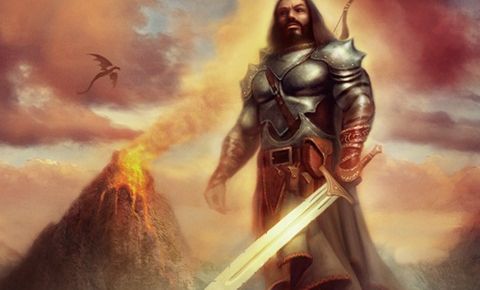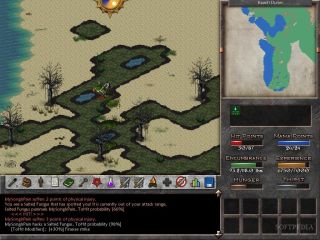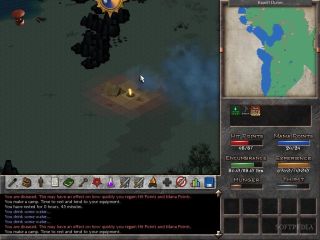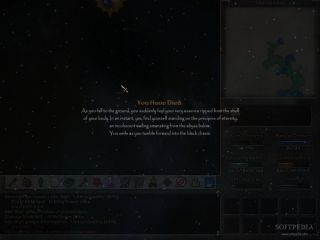Eschalon: Book III is the third and final installment in the Eschalon series, wrapping up the storyline developer Basilisk Games started back in 2007.
In short, Eschalon: Book III is a classical role-playing title that hardcore PC gamers have been impatiently waiting for since finishing the second chapter in the trilogy in 2010, which presents an unforgiving but rewarding, custom-tailored experience for old-school RPG fans.
The wrap-up of the story will reveal the mystery surrounding the Crux stones, the identity of the protagonist, and the secret of the Orakur, while allowing players to also assist in solving some of the problems of the lazy townfolk who can’t be bothered to harvest their own nuts from the secluded magical tree on top of Mount Doom, in typical role-playing game fashion.
The game
Eschalon: Book III has its roots firmly planted in the rich soil of pen & paper RPGs, with an extensive list of character traits and stats and fully customizable skill system that allow for the detailed chiseling of a representative player avatar.
Every point invested counts toward a certain roll in the game’s plethora of formulas utilized as a stand-in to the classical dice-rolling, and the stats and skills will profoundly alter the way you go about playing the game, from speed deciding whether you can get your hand out of a clam before it snaps back shut and damages you, to lore and intellect determining if you can identify that shiny ring you just picked up or you need to pay a merchant some gold in order to appraise your item.
The game features a very robust system that allows for replayability but unfortunately also punishes bad early choices, and the most unpleasant thing about it is that you don’t know what the formulas are, so you can’t really make any min-maxing decisions, so skill investments are a bit of a leap of faith unless you do your homework and seek some valid builds before you start playing.Apart from that, there are many advanced ideas that contrast with the antique veneer of Eschalon, such as the no-minimap-unless-you’re-a-cartographer feature or the fact that walking without shoes makes it much easier to sneak but also exposes you to some hazards such as leeches while treading in swamplands. Also, walking with shoes on wears them out.
It’s this kind of surprises that make the game so enjoyable, all the little details like being able to bash a door down when you fail to pick its lock, having a cockroach spitting you in the face and blinding you for a couple of turns or being able to gear your attacks toward higher accuracy but lower damage, and having to plan ahead and get supplies in order not to go hungry or thirsty during your adventuring.
It certainly seems like a leap forward from just mindlessly hacking away at entire hordes of enemies with the occasional boss fight interrupting the slumber. In Eschalon: Book III, you’ll most likely save every time a new enemy is spotted on the edge of the screen, because it follows the tradition of free roaming, not padding the experience one bit, and most of the time offering a quick path to the game over screen seen in so many old DOS games.
As such, the first thing you have to do is to get used to dying. You’ll be doing that a lot. The game’s difficulty is not exactly balanced, and many times it’ll be a matter of trial and error, repeating the same fight until you “get lucky” or fool the game engine and separate one mob from a group, pummeling him into oblivion and then running away and resting for 36 hours to regain hit points.
This is nothing new for people used to saving the game state before every encounter and who understand why there is a need for quick-save and quick-load buttons, but it’s going to come as a shock when a couple of ants can regularly make a picnic out of you.
Which is not necessarily bad, as the game rewards careful adventuring, and some encounters are like mini-puzzles where you just have to find the proper way to engage in order to turn the odds in your favor, which is part of the old-school charm of such games.
Eschalon is full of wonderful details and paradoxes. For instance, the engine is advanced enough to have light sources be a factor in the accuracy of attacks, but not enough to tell an opposing archer to move out of the brightly-lit doorway while you’re turning him into a porcupine from the safety of a shadowy corner.
The interface is also a bit reminiscent of the old days of tirelessly clicking through many menus in order to not get very much done, as pop-up overlays are clearly a futuristic notion and keyboard shortcuts are for flashy triple-A titles, but things aren’t as bad as they could be and you’ll soon get used to having to click the precise slider sprite to select the number of items when trading.
Visuals and sound
The game’s graphics are state-of-the-art, considering the age of the engine and its fixed resolution, and anyone would be hard-pressed to do any better than this within the same limits.
With light sources working surprisingly well and weather effects embellishing the already detailed game world, with rain, passing clouds, and clouded skies making textures look a little duller, it’s certainly a pixelated feast for the eyes.
There are visual effects for glancing strikes, abilities, and spells, and there’s also a lot of debris just lying around, making for a more immersive experience and fleshing out a realistic world.
The music and sound production is also pretty good. Aside from some repetitive clashes, grunts, and noises here and there, it usually adds to the whole experience, enhancing the immersion and not feeling out of place.
Conclusion
Eschalon: Book III is certainly a worthy iteration of the old-school role-playing game design paradigm, with its seamless turn-based to seemingly real-time gameplay, its rich lore and generally good dialogue writing, its pen-and-paper-inspired character progression system, and its unforgiving difficulty.
Although it has some pitfalls, such as being linear while at the same time having you aimlessly wander around, the cumbersome interface and punishing difficulty, it’s a game that offers many hours of fun exploration and a rewarding and deep gameplay experience.
 14 DAY TRIAL //
14 DAY TRIAL // 























